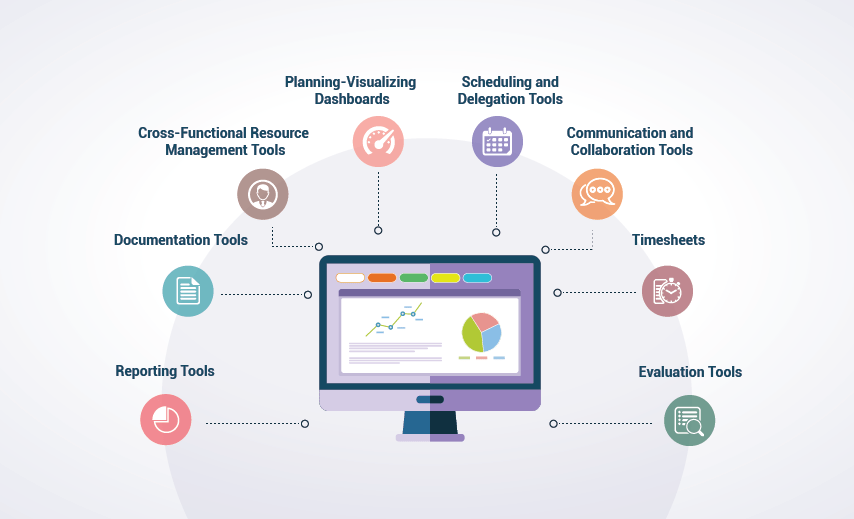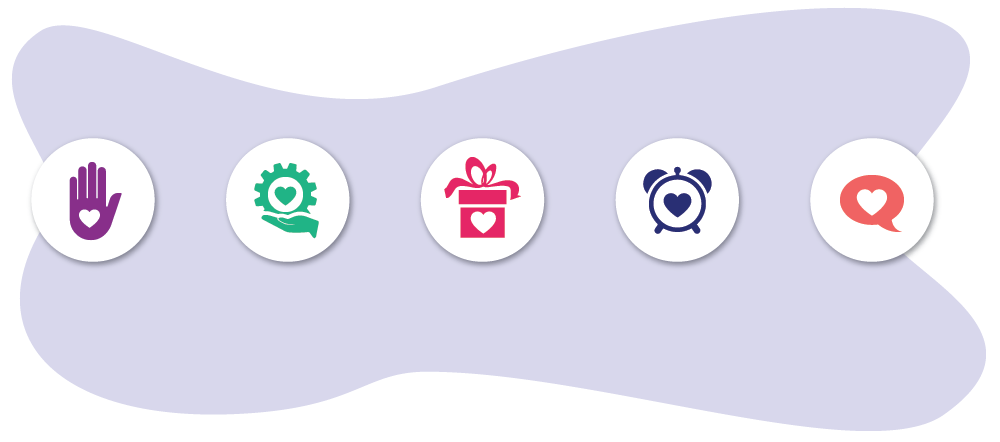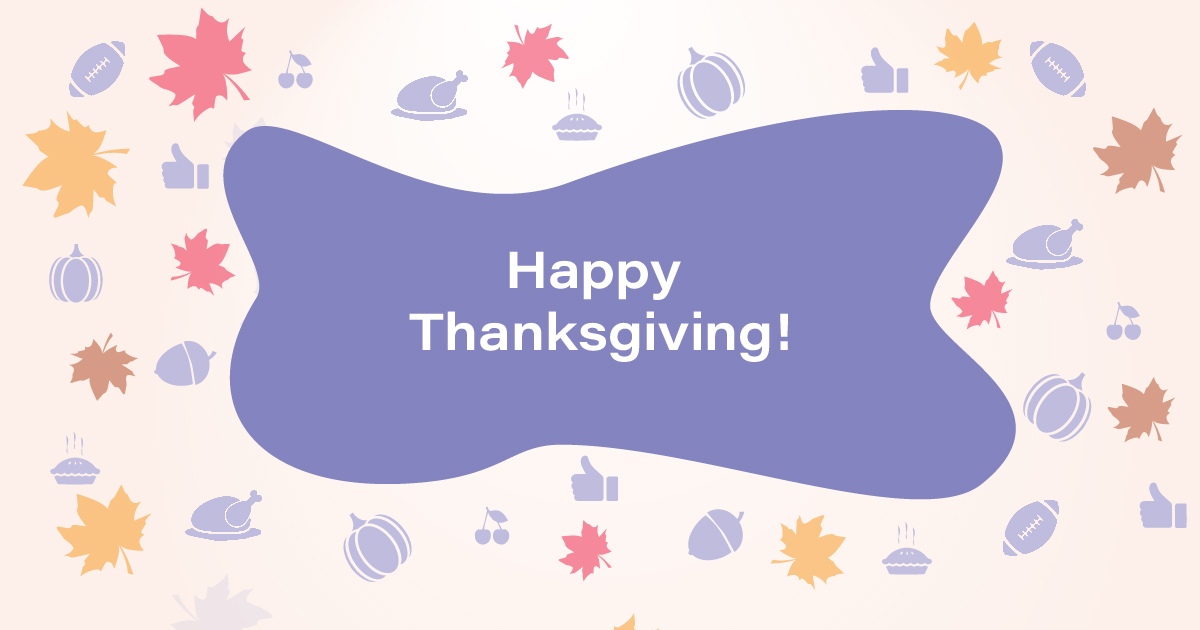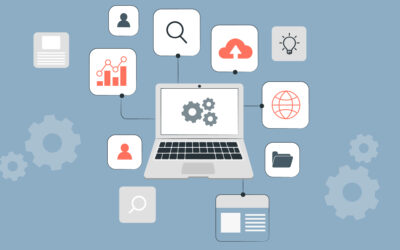Thanksgiving. A beautiful tradition of celebrating gratitude and thankfulness. A warm reminder of humankind’s gentle and sentimental side, especially when today’s world view is marred by intolerance and remorselessness. Celebrating thanksgiving encourages gratefulness, appreciation, tolerance, mindfulness, and sharing; values that should ideally be practiced by everyone who is a part of a team.
Leaders or project managers often tend to harp on stats and numbers when it comes to project success. And who can blame them? Project managers carry the load of managing people, processes, and performance in the entire project.
Project management can sure feel like a thankless job at times. One can forget to reflect on what went into a successful project –– several teammates giving their best efforts, pulling long hours, perhaps burning the candle at both ends. It’s essential, as a project manager, to be thankful and show gratitude to those who worked hard and made it happen.
Why You Need to Be Thankful and How Gratitude Affects Your Project’s Performance
Being appreciative and thankful, having gratitude, rather than a “you just did your job” attitude goes a long way in improving your relationships with your teammates. A team that likes their manager and looks up to them always performs well, making you a better manager in turn.
But the positive effects of gratitude are much deeper than that. Neuroscientist and author Dr. Alex Korb believes that gratitude is capable of making a powerful impact on your life since it engages your brain in a virtuous cycle.
A Psychology Today article outlines the areas of the human brain affected by appreciation and gratefulness. The all-important hypothalamus, the mission control center, is positively affected. The hypothalamus regulates basic bodily functions and hormones, such as dopamine. When you feel and express gratitude, all bodily functions and day to day behavior are improved, and you perform markedly better.
As you can imagine, this stimulus has significant positive effects in the workplace, such as prosocial interactions and better work-life balance. This directly impacts work results and elevates not only performance and engagement but also wellbeing and health.

According to professor Robert Emmons from the University of California, “A lack of gratitude is one of the primary reasons for job dissatisfaction, burnout, absenteeism, and attrition. He adds further, “Most of our waking hours are spent on the job, and gratitude, in all its forms, is a basic human requirement.”
Appreciation, a sister discipline of thankfulness, is a stronger motivator than monetary benefits. According to a study conducted by Glassdoor, 80% of employees would work harder for an appreciative boss, and 70% would feel better about themselves and their efforts if their boss expressed gratitude and appreciation more regularly.
What Are Project Managers Grateful For?
Kristyn Medeiros from Planview has a remarkable anecdote to share –– This year, I thank resource requests.
She says, “A few years ago, I was in charge of running the entire PMO. The team was executing the process to the letter, yet somehow we were consistently delivering projects late. We invested in professional project management training, went over every little detail in the projects, reached out to stakeholders to get their feedback, but nothing seemed to work.”
Kristyn realized, the team was facing these problems because of an informal approach that left severe gaps in communication with the resource manager. As a result, all teams were overbooked and overcommitted.
She soon put a project work authorization and resource requesting process in place, monitored by a project management tool. Now, Kristyn’s teams were delivering projects on time, and everyone loved how the new tool and a structured operation process made their lives easier.
Such anecdotes serve to remind how project management is an exciting, challenging, and fulfilling job.

How Should You Thank Your Team When Celebrating Thanksgiving?
Gratitude is a core element necessary for effective team building. Most of us recognize it, but not everyone expresses it.
Mathematician and philosopher Alfred North Whitehead says,
“No one who achieves success does so without acknowledging the help of others. The wise and confident acknowledge this help with gratitude.”
The former CEO of Campbell Soup famously 30,000 thank you notes to his employees. That is heartwarming and indeed an impressive feat! If not 30,000 ‘Thank Yous.’, you could definitely give out 30, right?
You could follow this guide mentioned in Gary Chapman’s and Dr. Paul White’s book ‘5 languages of appreciation in the workplace’.

The book details the 5 ways in which you can express appreciation and gratitude for someone, characterized by:
1. Words of Affirmation : Send a personalized email, a heartfelt message thanking a teammate for their efforts and the skills they bring to the project. Or, better yet, put up a post-it or a card expressing gratitude for all that they have done for you so for. A hardcopy will serve as a pleasant reminder of the attitude of gratitude, and thankfulness felt in the project team. Besides, handwritten notes are a rare and valuable commodity in today’s times.
If you’re having trouble with it, see if you can mention most of these things in your personalized note.
- What have they helped you with?
- What character qualities do they demonstrate?
- What do they do that is indispensable to the team?
- What talents or skills do they bring to the project?
- What did you learn from them?
At the end of your message, add a special touch by asking if you can reciprocate in some way.
e.g., Dear Ted,
I really appreciate what you do for me. Thank you specifically for the [effort you put…/ the way you handled that situation…] with your [decision…/ quick-thinking…/ expertise…/ courage…/ flexibility etc.] and you [saved the day…/specific desired result… / helped us deliver on time, etc.]. You have always been such a help, I appreciate your [ character skill…/ talent…/ unique quality] and support in every way. I am happy to have you on my team, and I’m looking forward to making this project a success.
2. Acts of Service : Help out a teammate with their project work, or do something that’ll make their life at work easier. It can be as easy as getting them coffee, reminding them to stay hydrated, supporting them and their vision in a meeting, helping out with any dependencies their tasks might have, or merely being obliging and mindful of their time and efforts.
3. Giving Gifts : Give your team a small, inexpensive holiday-themed or Thanksgiving gift. You can go for personal items that hold specific value to the particular teammate, and something that can adorn their desk. A picture of the team celebrating in a festive photo frame will also do the trick. Depending on your teammates, get sweet treats like candy, cupcakes, a slice of pumpkin pie, or healthy munchable snacks. Encourage your teammates to do the same for each other and see how much of a better place the office remains all year long.
4. Quality Time : Take your team out to a sumptuous lunch or indulge in some team building activities. Multiple studies such as this one from the Department of Health Policy Management (iBMG), Rotterdam show that such team building activities will not only make your teammates feel de-stressed and happier resulting in elevated productivity and performance levels, but also create a sense of oneness and induce a greater understanding of each other’s strengths, weaknesses, and interests resulting in an excellent and well-adjusted team that delivers great projects together.
5. Physical Touch : Some teammates respond better to a high five, a warm handshake, a pat on the back, or a hug, supplemented with a few kind words than to a thank you message or a gift. Small gestures and physical contact establish an emotional connection with a person, making them feel loved, appreciated, and valued. Obviously, everyone’s comfort levels and personal boundaries are different. You need to know which of your teammates would be okay with what. Some may find hugs endearing, some will only like a handshake or a high five. Check out how to make teammates feel comfortable with physical gestures of appreciation and gratitude.
The key to thanking someone lies in figuring out what they like, what their love language seems to be. As a project manager, your teammates look up to you. You can lead by example and introduce an attitude of gratitude, thankfulness, and appreciation.
How to Bring the Thanksgiving Cheer to Your Project Team?
Along with saying thanks, to get your team in the spirit of Thanksgiving and give yourselves a reason to replace the Halloween decorations with fresh ones until Christmas. You can do the following things:
Think of a fun team activity.
Instead of the age-old, cumbersome, cliche tradition of just making a turkey dinner, pull a secret turkey party ––– precisely like secret Santa, but, you give a small trinket or gift and a big, heartfelt, personalized thank you note to the person you are assigned. The gifts are not the focal point of this activity, the notes are. The gifts can be as simple as office supplies and stationery. Although you can personalize the gifts and make it even better. Bonding over making amusing turkey day crafts and decorating the office is also a good idea.

Create a room of thanks, or a thank you tree.
Give your teammates a warm surprise they’ll never forget by making a tree or filling a wall(s) with little post-its of names of teammates written all over it, and letting teammates write short thank you messages all over.
Throw together a turkey day play.
Perform a thanksgiving play or, for more fun, dress up, include some inside jokes, involve the audience – make it a fun and fresh way to celebrate your company’s history and the people who have made it what it is.
Compete in festive games.
Play festive games with your team to enjoy Thanksgiving with some team bonding while also preserving the traditional cheer. You can always put a festive spin on regular team building games, or reprise some of the fun games you played as a child on Thanksgiving. Coming up with these is almost as much fun as playing them!
Hold a recipe competition or make it a potluck.
You can count on everyone’s fridges and cabinets being chock full of thanksgiving food and hold a recipe competition that makes uses of the thanksgiving feast. You can also celebrate the diversity in your team by announcing a potluck where everyone brings food they traditionally like to enjoy with the family and friends.
Bonus –– a Guide to Celebrating Turkey Day the Project Management Way
We think you could make great use of your inner project manager to make sure your dinner party guests will never forget what a success Thanksgiving at your place was.
Step 1 : Outline the project scope.
How big of a celebration do you want? How many guests? What do your guests like?
Step 2 : Chalk out the requirements.
How many pots, plates, and pans would you need? Would you have to take out your fine china? Do the guests want a turkey, or do you think they would be okay if you tried the ‘turducken’ recipe you’ve wanted to.
Step 3 : Make a task list, collaborate with your team.
Make a menu, a list of whom you’re going to invite, delegate what you need to –– who’s bringing what, who’s helping how, and create your shopping list.
Step 4 : Set the timelines.
Schedule sufficiently ahead of time what you’re going to make exactly when. Figure out what time everything needs to go in the oven and in what order for it all to smell delicious and be ready at just the right time.
Step 5 : Manage Risks.
What if someone’s on an ill-timed diet? What if someone has turned vegan for the festive season? What about the gluten and nut allergies? What if the carving knives are not sharp enough? You need a risk management plan.
The Essence of Celebrating Thanksgiving in Project Management
Thanksgiving is a great holiday. Sure, everyone, along with the turkey looks forward to watching a game of football and being stuffed while enjoying the company of people who love you. But, its real virtue is greater, since it is born from a beautiful historical tale of hardship, intercultural tolerance, sharing, celebrating abundance, resourcefulness, friendship, peaceful coexistence, and support –– values that are as important in project management and working as a team as in life.






0 Comments